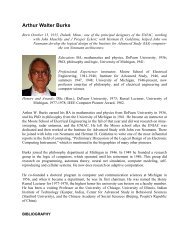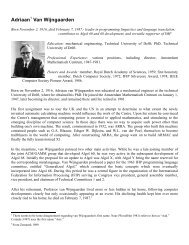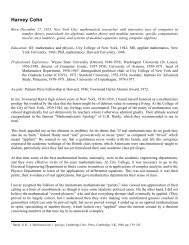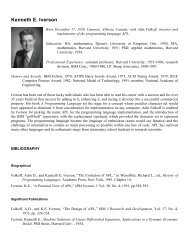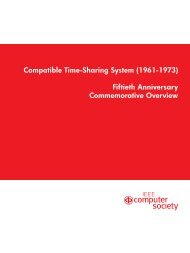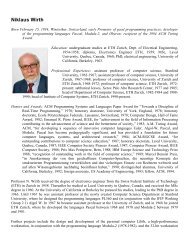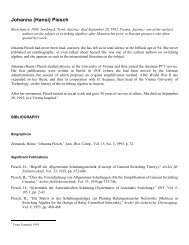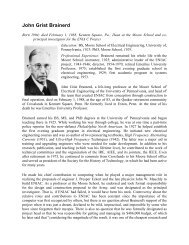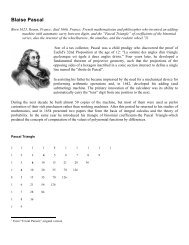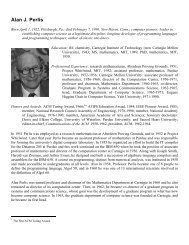John Vincent Atanasoff - Walden Family
John Vincent Atanasoff - Walden Family
John Vincent Atanasoff - Walden Family
Create successful ePaper yourself
Turn your PDF publications into a flip-book with our unique Google optimized e-Paper software.
“The discussions Mauchly had with both <strong>Atanasoff</strong> and Berry while at Ames were free and open and no<br />
significant information concerning the machine's theory, design, construction, use or operation was<br />
withheld.”<br />
“Prior to his visit to Ames, Iowa, Mauchly had been broadly interested in electrical analog calculating<br />
devices, but had not conceived an automatic electronic digital computer.”<br />
“Eckert and Mauchly did not themselves first invent 'the automatic electronic digital computer,' which<br />
Sperry-Rand and ISD contend to be the subject matter of the ENIAC patent, but instead derived that<br />
broad subject matter from Dr. <strong>John</strong> V. <strong>Atanasoff</strong>, and the ENIAC patent is thereby invalid.”<br />
After thus spelling out the conduct of Mauchly and Eckert in regard to me and my work, judge Larson presented<br />
the other side of the picture, including a lack of action by me, and found Honeywell not entitled to antitrust<br />
damages for willful and intentional fraud on the Patent office.<br />
In addition to his findings on the derivation of the ENIAC from me, judge Larson now ruled that the<br />
Regenerative Memory Patent No. 2,629,827 at issue in the CDC case in Baltimore, was derived from me.<br />
Disposition of the Two Cases<br />
Everyone expected that judge Larson's decision would be appealed, but rather quickly it was settled by the<br />
payment of money and an agreement between the parties that each would support the judge's decision of 1973. I<br />
have been told that Sperry-Rand paid $3,500,000, sufficient to reimburse Honeywell for the cost of the trial.<br />
Thus ended this important case.<br />
As to the Computer Memory case in Baltimore, I acted as a witness in it after the ENIAC trial was over. The<br />
trial in that case was active for only a few days; then it was abandoned from lack of interest of principals or<br />
counsel. In 1981, nine years later, some important judge insisted that the case be settled, and so it too was<br />
settled by a contractual agreement, this time between CDC and Sperry-Rand. I was told that a payment of<br />
money was made here also, by Sperry-Rand, but the amount and other terms were not disclosed. The matter was<br />
moot, because the patent had expired.<br />
BIBLIOGRAPHY<br />
Biographical<br />
<strong>Atanasoff</strong>, <strong>John</strong> V., “Advent of 'Electronic Digital Computing,” Ann. Hist. Comp., Vol. 6, No. 3, 1984, pp. 229-<br />
282.<br />
Burks, Alice R., and Arthur W. Burks, The First Electronic Computer: The <strong>Atanasoff</strong> Story, University of<br />
Michigan Press, Ann Arbor, Mich., 1988.<br />
Burks, Arthur W., and Alice R. Burks, “The ENIAC: First General Purpose Electronic Computer,” Ann. Hist.<br />
Comp., Vol. 3, No. 4, 1981, pp. 310-399.<br />
Finerman, A., ed., “The Origins of Modern Computing,” Comp. Revs., Sept. 1990, pp. 449-481.






